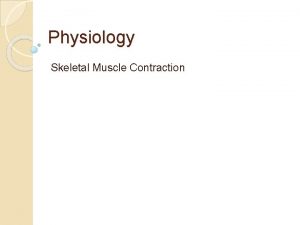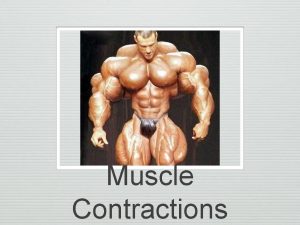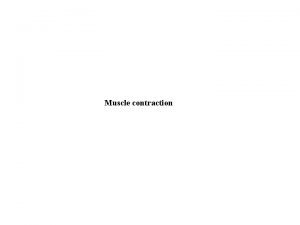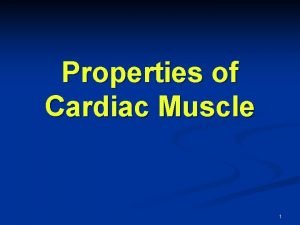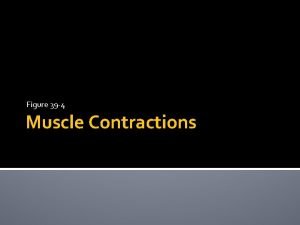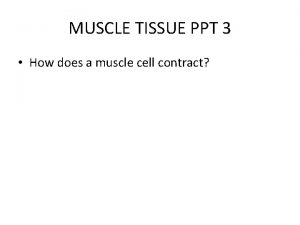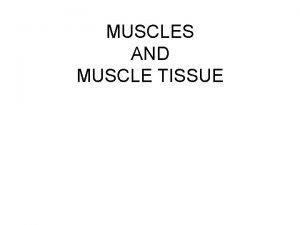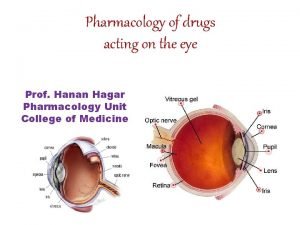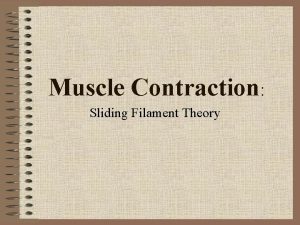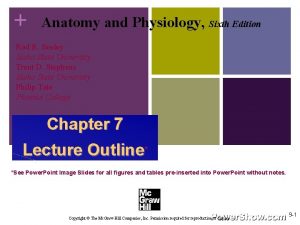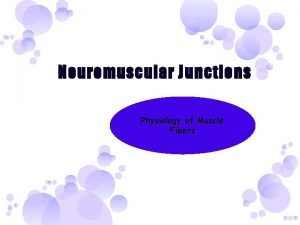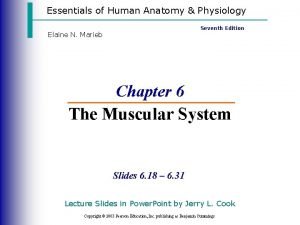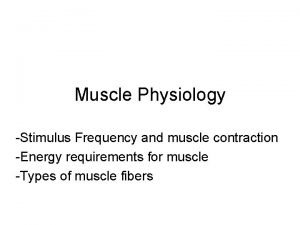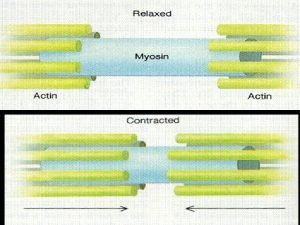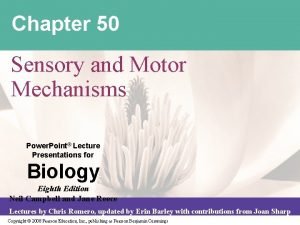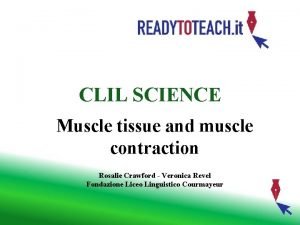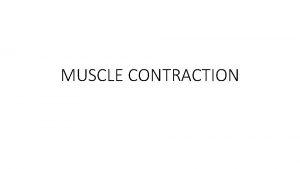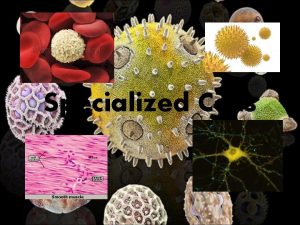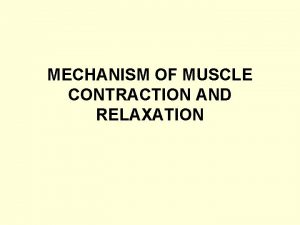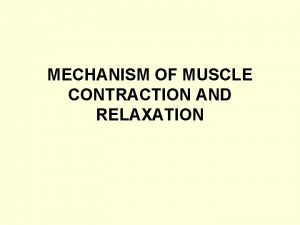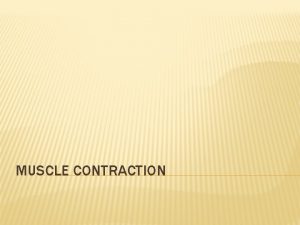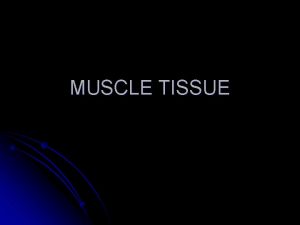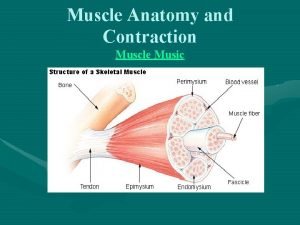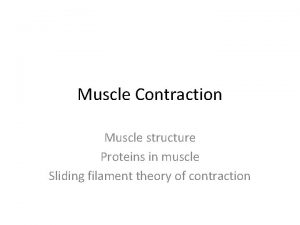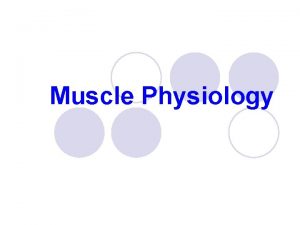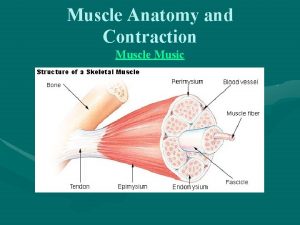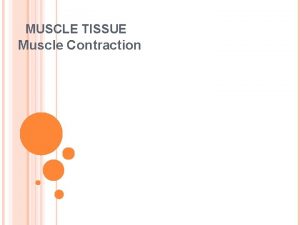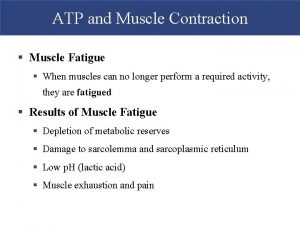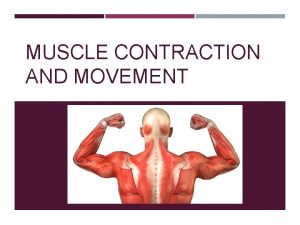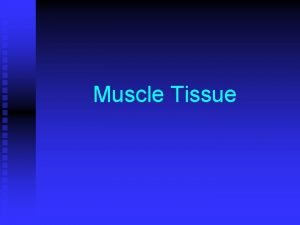Muscles Muscles Muscle cells specialized for contraction Allow

















- Slides: 17

Muscles

Muscles • Muscle cells specialized for contraction • Allow movement & bodily functions such as respiration & digestion

3 Types of Muscle Skeletal • Attached to bones • Control locomotion & movement • Voluntary • Striated Smooth • Walls of organs • Control digestion, respiratory • Involuntary • Non-striated Cardiac • Only in heart • Contractions pump blood • Involuntary • Striated

3 Types of Muscle Skeletal • Attached to bones • Control locomotion & movement • Voluntary • Striated Smooth • Walls of organs • Control digestion, respiratory • Involuntary • Non-striated Cardiac • Only in heart • Contractions pump blood • Involuntary • Striated

3 Types of Muscle Skeletal • Attached to bones • Control locomotion & movement • Voluntary • Striated Smooth • Walls of organs • Control digestion, respiratory • Involuntary • Non-striated Cardiac • Only in heart • Contractions pump blood • Involuntary • Striated

Skeletal Muscle Fiber Structure • Each muscle fiber has 1000’s of myofibrils • Sarcomere: Repeating structural unit of a myofibril btw two Z lines

Skeletal Muscle Fiber Structure Myosin (thick filaments) & Actin (thin filaments) give striated appearance

Sliding Filament Theory of Muscle Contraction Contracting muscle shortens but the filaments stay the same length; Instead, they slide past each other

ATP needed for muscle contraction • Each myosin has a “tail” region and a “head” region • Head region of myosin binds to ATP (lowenergy configuration)

Hydrolysis of ATP converts myosin to high-energy form

Myosin head can now bind to actin by a cross-bridge

Myosin head returns to low-energy form as it pulls the actin towards sarcomere center

New ATP binds to myosin head, breaking cross-bridge, releasing actin

Role of Action Potentials & Calcium in Contraction • Synaptic terminal of motor neuron releases acetylcholine (neurotransmitter), depolarizing muscle fiber’s membrane • Depolarization causes action potential to move across fiber and into it along transverse (T) tubules • Action potential triggers release of Ca 2+ from sarcoplasmic reticulum into cytosol

Regulatory Proteins • Muscle fiber at rest: tropomyosin & troponin complex binds to actin, blocking myosin-binding sites so no cross-bridge can form

Regulatory Proteins • Muscle fiber at rest: tropomyosin & troponin complex binds to actin, blocking myosin-binding sites so no cross-bridge can form • Motor neurons enable contraction by triggering release of Ca 2+ into cytosol • Ca 2+ binds to troponin complex, exposing myosinbinding sites, allowing cross-bridges

Summary of Contraction in Skeletal Muscle Fiber
 Smooth muscle contraction
Smooth muscle contraction Myofibril
Myofibril Muscle contraction
Muscle contraction Muscle contraction
Muscle contraction Spread of cardiac impulse
Spread of cardiac impulse Muscle contraction animation mcgraw hill
Muscle contraction animation mcgraw hill Muscle tissue ppt
Muscle tissue ppt Latent phase muscle contraction
Latent phase muscle contraction 3 phases of muscle contraction
3 phases of muscle contraction Drug acting on eye
Drug acting on eye Sliding filament theory worksheet
Sliding filament theory worksheet Phases of muscle contraction
Phases of muscle contraction Sarcoplasmic reticulum
Sarcoplasmic reticulum Direct phosphorylation
Direct phosphorylation Muscle spasm
Muscle spasm Muscle contraction
Muscle contraction Whole muscle contraction
Whole muscle contraction Muscle contraction
Muscle contraction

